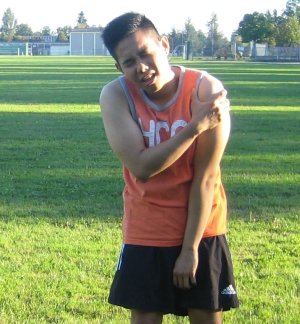
Patient with arm casts may experience limited mobility of the upper extremity and must readjust to many of his/her routine activities of daily living. The unaffected arm must assume all the upper extremity activities and tasks which can be very frustrating especially if the affected arm is the dominant arm of use.
The nurse who is charged with the care of patients with arm casts, in consultation with the attending orthopedic physician as well as the occupational therapist will normally suggest devices designed to aid one-handed activities for better functioning. At first, the individual may experience fatigue due to modified activities and added weight of the circular cast, hence there is a need to instruct individuals to observe frequent rest periods in between activities.
Controlling swelling on arm casts
To control swelling of a patient fitted with arm casts, the immobilized arm should be elevated above the level of the heart if allowable and within the range of motion. When the individual is lying down, the arm should be elevated in order for each joint to be positioned higher than the preceding proximal joint (eg. the elbow should ideally be level with the shoulder, the hand higher than the elbow).
A sling, if necessary and appropriate, should be used when the individual is ambulating in order to prevent undue stress on the affected arm from experiencing the effects of gravity. The proper way of positioning the sling should be well anchored evenly around the posterior portion of the neck and shoulders and not solely on the back of the neck to prevent undue stress on the neck muscles. Furthermore, the nurse should encourage the individual to remove the arm from the sling and elevate it in frequent intervals.
Potential problems of patients with arm casts
Circulatory problems are among the most common problems experienced by a person with an arm cast. Such problems arise in the affected arm because of a tightly fitted circular cast which impedes circulation to the injured extremity. Common symptoms of compromised circulatory problem when cyanosis, swelling and inability to move the fingers becomes evident. One very
serious effect of impaired circulation in the arm is contracture of the fingers. Contractures of the finger and the wrist occur as a result of obstructed blood flow to the forearm and arm. The resulting problem would result in immobility of the wrist and fingers and abnormal sensation (unrelenting pain and pain upon passive stretching) along with the already existing symptoms of diminished circulation to the affected hand. Permanent damage will soon develop within a few hours if proper care is not provided.
